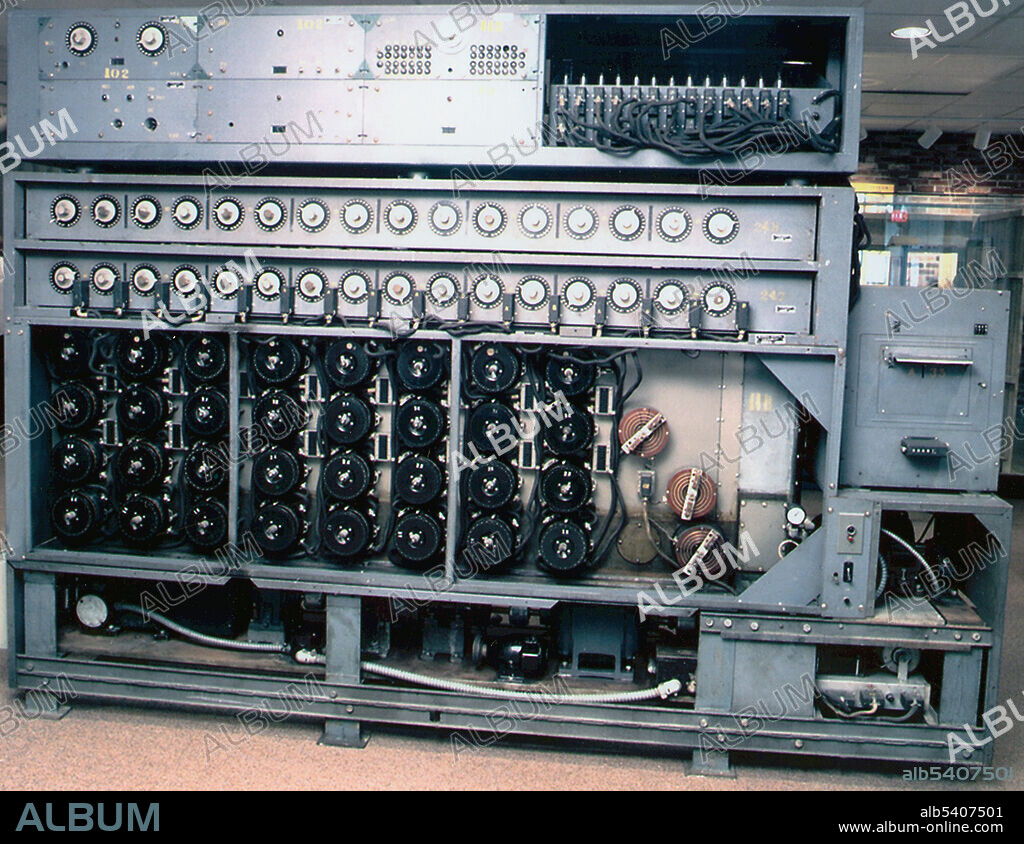alb5407501
US Navy Version of Turing Bombe,1940s

|
Añadir a otro lightbox |
|
Añadir a otro lightbox |



¿Ya tienes cuenta? Iniciar sesión
¿No tienes cuenta? Regístrate
Compra esta imagen

Título:
US Navy Version of Turing Bombe,1940s
Descripción:
Ver traducción automática
US Navy version of the Turing bombe, used against the German cipher machine Enigma-M4. It contained 16 four-rotor Enigma-equivalents and was much faster than the British bombe. The bombe was an electro-mechanical device used by British cryptologists to help decipher German Enigma-machine-encrypted secret messages during World War II. The initial design of the bombe was produced in 1939 at the UK Government Code and Cypher School (GC&CS) at Bletchley Park by Alan Turing, with an important refinement devised in 1940 by Gordon Welchman. The bombe was designed to discover some of the daily settings of the Enigma machines on the various German military networks: specifically, the set of rotors in use and their positions in the machine; the rotor core start positions for the message—the message key—and one of the wirings of the plugboard.
Crédito:
Album / Science Source
Autorizaciones:
Modelo: No - Propiedad: No
¿Preguntas relacionadas con los derechos?
¿Preguntas relacionadas con los derechos?
Tamaño imagen:
2400 x 1853 px | 12.7 MB
Tamaño impresión:
20.3 x 15.7 cm | 8.0 x 6.2 in (300 dpi)
Palabras clave:
AGRIETAMIENTO • ALEMAN • ALIADO • AMERICA • AÑOS CUARENTA • CIENCIA • ENIGMA • ESTADOS UNIDOS DE AMERICA • GRAN BRETAÑA • HISTORIA • INGLATERRA • INGLES • MAQUINA • MARINA (EJERCITO) • NAVAL • ORDENADOR • SEGUNDA GUERRA MUNDIAL • TECNOLOGÍA • TIEMPO DE GUERRA
 Pinterest
Pinterest Twitter
Twitter Facebook
Facebook Copiar enlace
Copiar enlace Email
Email
